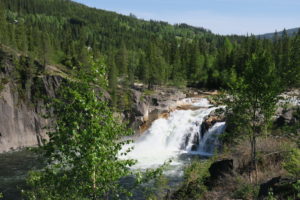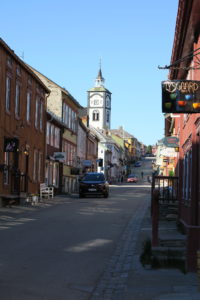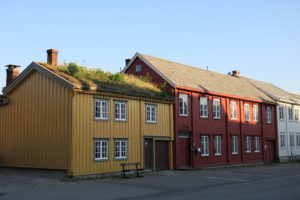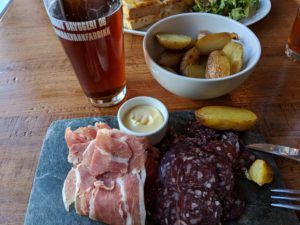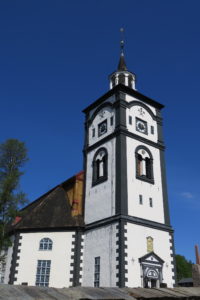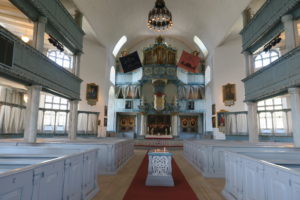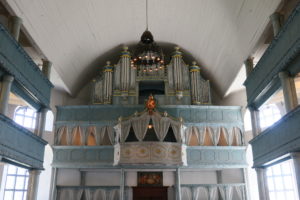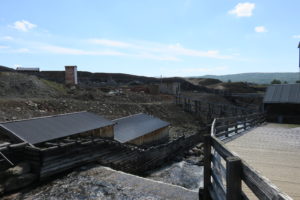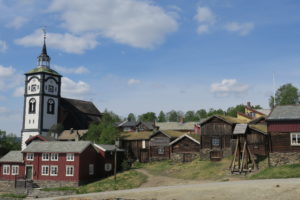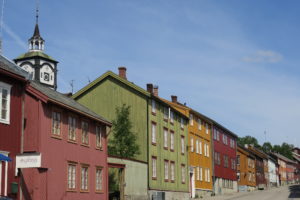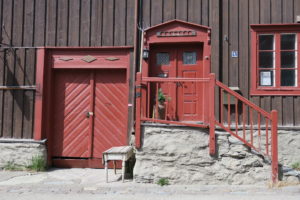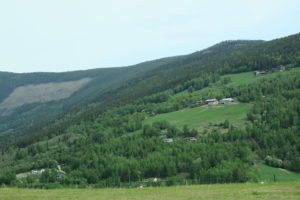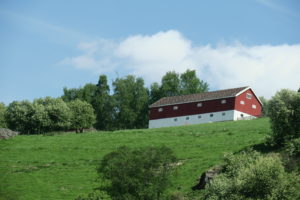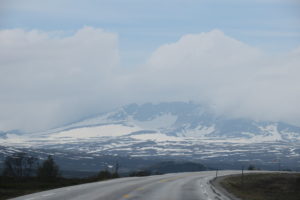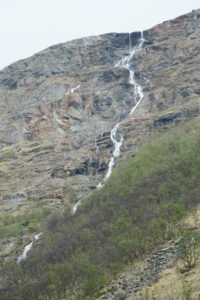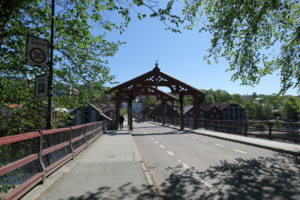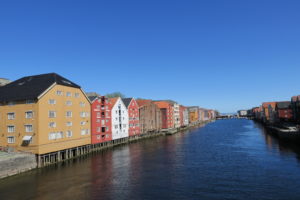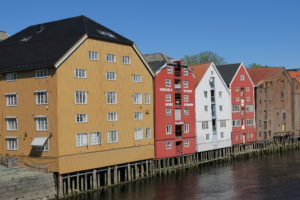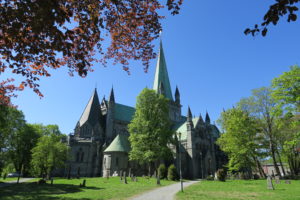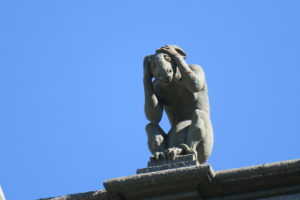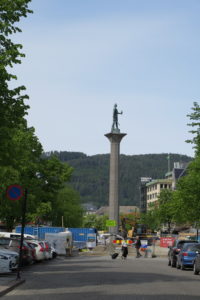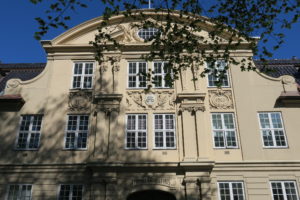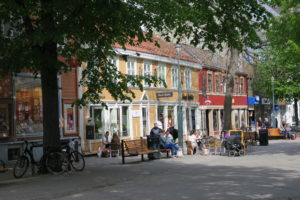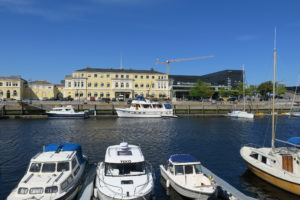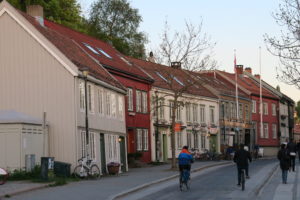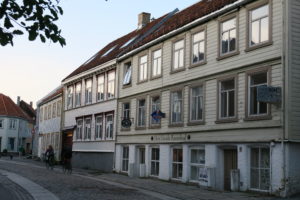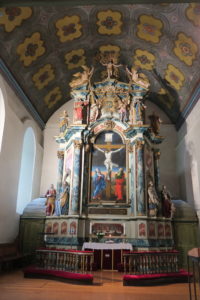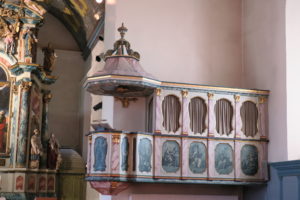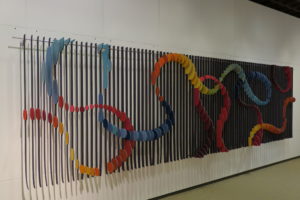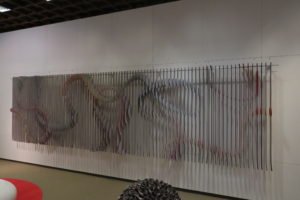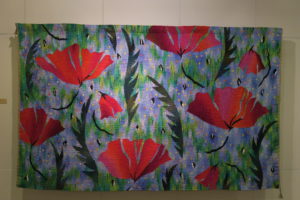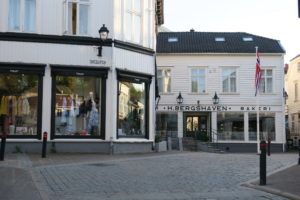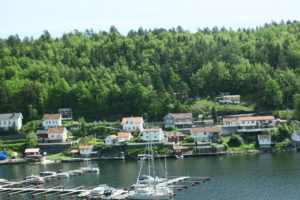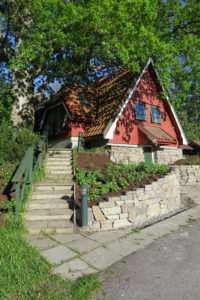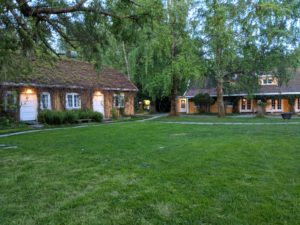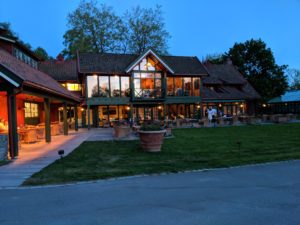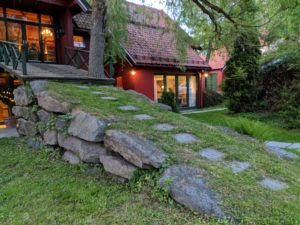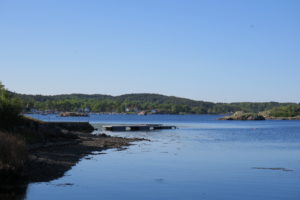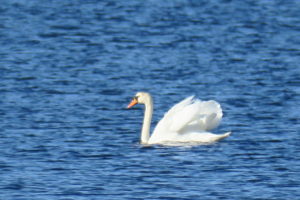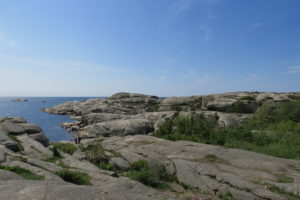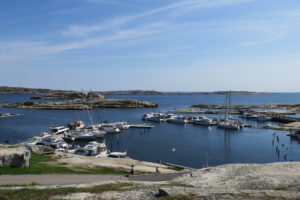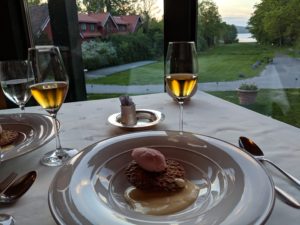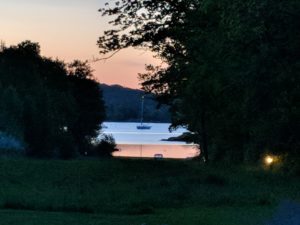Sunday, May 27–Time to travel south to get closer to the Oslo airport, where we had to give our precious Volvo V40 back to Hertz on Tuesday.
On our way south, we had decided to stay in Hamar, which is just 90km from the airport but sits on Lake Mjosa, the largest lake in Norway.
It was a pretty drive through a mountain valley and a pretty day for seeing it. Lots of pine trees. Lots of farms.
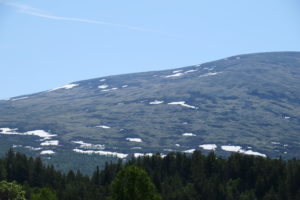
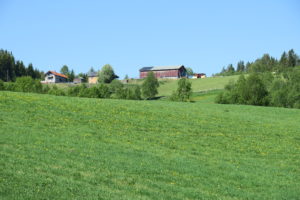
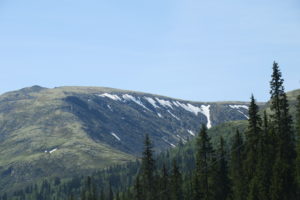
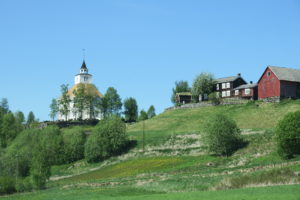



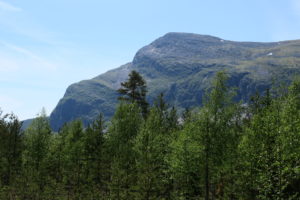
Saw ski jumps outside a couple of the small towns we went through. I’d say that’s solid evidence they see a fair amount of snow in winter.
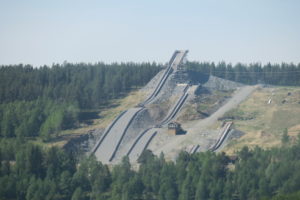
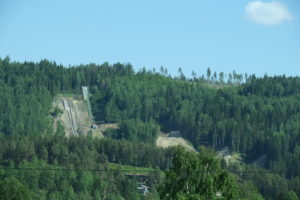
Background note: We had seen a cluster of old American cars while we were in Røros: a Cadillac Eldorado and a Chrysler, both 1963-64; a Pontiac Firebird; and a 1956 or ‘57 Ford Fairlane. All of them convertibles. Seems so funny. Roros is a town of only 5000, and it’s essentially in the middle of nowhere. Why were we seeing all these American cars? I met a Swedish man who was sitting on the adjacent balcony at our Røros hotel. His first question to me: “Have you spotted any fine cars?” He was revelling in having seen a Firebird, which I later saw as well. We engaged in a lengthy conversation, but I missed the right moment to ask why these cars were here, and, I suppose, why he was looking for them and assumed I might be also.
As we were driving into Hamar, we saw another raft of Americana in the form of gussied up, shining old cars: a 1960-ish Cadillac convertible, a 1962 red Chevy, a Camaro, a 1957 Chevy, a 1958 Olds or Buick, a Lincoln convertible from 1960 or so, a GTO, and four Corvettes. This seems to be a thing in Scandinavia. We saw them in Sweden as well. We keep wondering where they come from, how they get here. Wonder if they might have been brought over by American soldiers at some point.
One of the things to do in Hamar is ride a lovely old wooden paddle steamer on the lake. Naturally, as we have found time and again, its season has not started yet. June seems to be the time for everything to come alive in this part of the world. Hamar was getting set up for a beer festival, which is apparently their season kickoff on June 1.
Too early for either of these options, we went to see some old church ruins that are preserved under a glass dome. Closed on Monday, of course. There were some students and a teacher inside the enclosure, so we let ourselves in and looked about quickly before they noticed us. Felt a bit sneaky, so we didn’t dawdle.
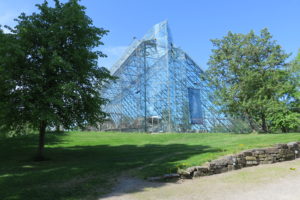
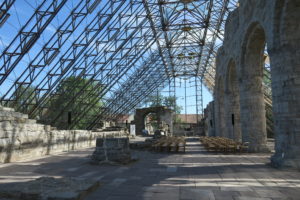
Saw this handsome guy wandering nearby.
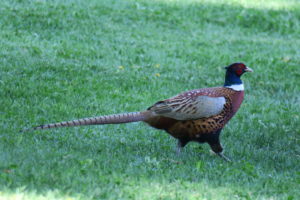
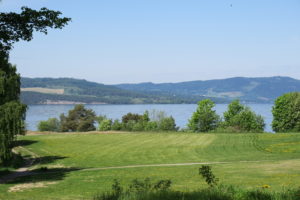
On the grounds downhill but adjacent were a handful of old buildings in an open air museum setting. We were able to walk around the buildings and see them without having to worry about crowds.
From 1620.
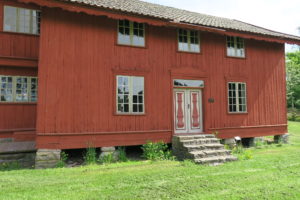
From 1725. Note the steep external staircase.
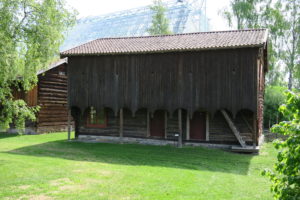

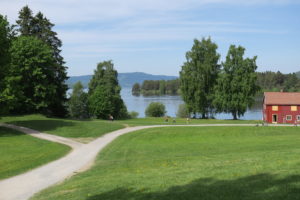
Lilacs in bloom everywhere.
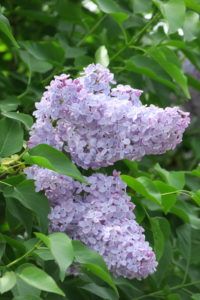
Hamar is a popular summer vacation area. We walked through its center and saw a number of attractive old buildings.
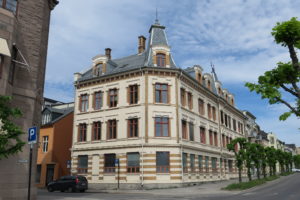
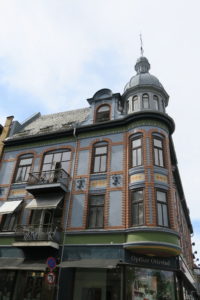

It has an imposing old train station. There are two train lines that run through Hamar, one of them being the Røros line.
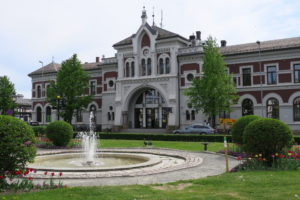

Hamar sits prettily along Lake Mjosa. It is a huge lake—72 miles in length. We had driven within sight of it from the west as we drove north to Trondheim. Hamar is on its northeast shore. On Tuesday, we drove the length of the lake as we drove to the Oslo airport.
We begrudgingly gave Hertz the keys to our/their car, but asked our friendly service person to take our picture with the car before we left it behind. 4400km. Well done V40!
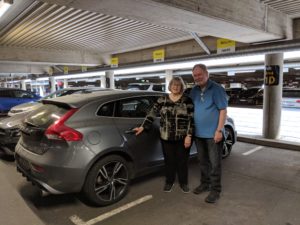
We and all of our collected belongings rolled into and through the air terminal to get a taxi to Oslo. It’s a long ways (55km), and we knew it wouldn’t be a cheap ride. But we had enough luggage it was the right way to make the trip. We were once burned by a taxi choice, so Jerry asked the driver to commit to a price. He wanted 1400 NOK (Norwegian krone), which converts to $172! I looked at him like he’d lost his mind. I wondered if we’d misheard him. We complained it was too much, and he eventually offered to take us (literally and figuratively) for 1300 NOK. We turned and walked back into the terminal.
Jerry suggested we ask at the information desk about what a general cost should be. I left Jerry with the baggage and went to Information. They can’t tell you a price or even price range. It really is up to the individual cab companies. Some have fixed rates, and some do not. The desk person walked me to a transit desk next door and showed me how to use a machine to give me some prices from different cab companies. Then she turned me over to a desk person there. What a nifty system. You enter your destination, and bid prices pop up. There were four prices from companies willing to set a rate for airport-city trips, and four companies shooting for the moon I guess. The prices ranged from 699 NOK ($86) to 1520 NOK ($187). The man said there was absolutely no difference in the service we would receive and that there was no reason to pick anything but the lowest rate. So I clicked the button for 699 NOK; the man handed me a ticket and said the car would arrive at the door within 3-4 minutes. The ticket showed the committed rate and the car number. Pretty slick. We walked back outside with our bags, the car rolled up, and off we went. Forty-five minutes later we were delivered to our hotel door. Boy, did we feel fortunate to have dodged that particular pitfall.
Now it’s time to see Oslo and fill in a few of the gaps from our visit 2 years ago. Wish it weren’t going to be so hot, but that part is completely out of our control.
